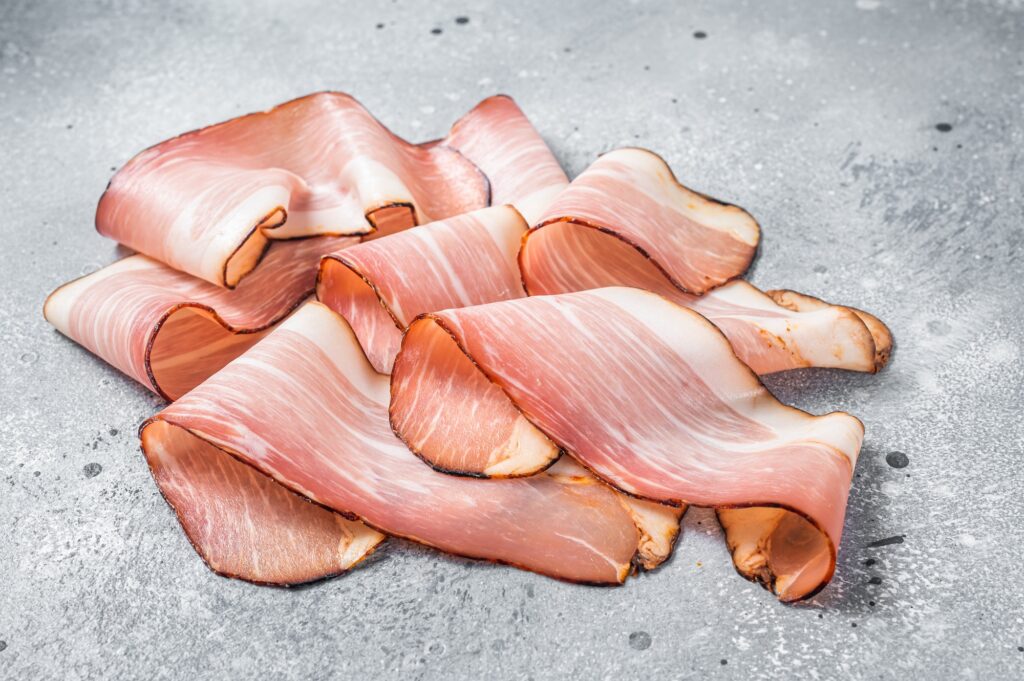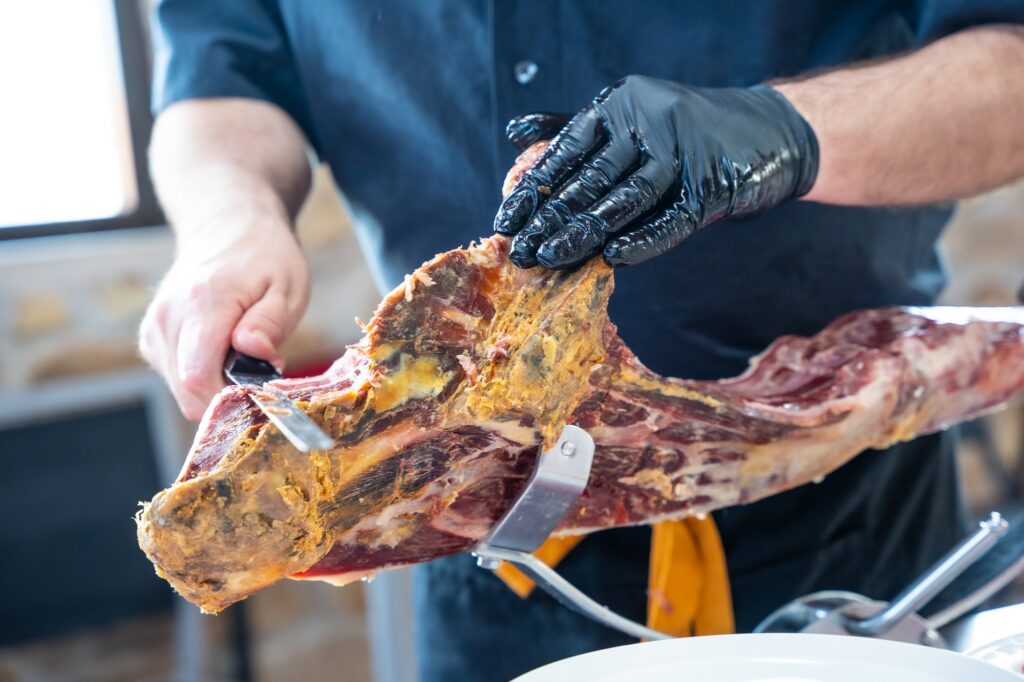Varieties of Ham

Varieties of Ham
Ham is a versatile and delicious type of cured pork that comes in many varieties. From smoky to sweet, and everything in between, there’s a ham out there for every taste. Read on to learn more about some of the most popular types of ham.
Classic Hams
These traditional hams have classic salty, smoky, and slightly sweet flavors that make them extremely versatile for cooking and serving.
Discover ‘15 Fun Facts About Ham,’ where you’ll learn about ham’s storied past, its various types from country to prosciutto, nutritional information, and quirky trivia that spans from ancient techniques to modern-day consumption.
Black Forest Ham

- Lightly smoked over pine and fir trees
- Bold, smoky flavor
- Delicately seasoned with garlic, cracked pepper, and coriander
- Made from hind leg of pork and dry cured
Prosciutto

- Dry-cured ham that is unsmoked
- Delicately salty flavor with a subtle sweetness1
- Made from a pig’s hind leg or thigh
- Often sliced paper-thin
Serrano Ham

- Robust, savory flavor
- Dry-cured for up to 12 months
- Produced exclusively in Spain
- Distinctive marbling gives rich texture
Specialty Hams
Beyond the classics, there is a world of unique specialty hams with distinctive flavors.
Jamon Iberico
- Hailed as one of the world’s finest hams
- Made exclusively from acorn-fed Iberian breed pigs2
- Rich, intensely marbled with fat, nutty flavor
- Produced in Spain and cured for upwards of 3 years
Mangalitsa Ham
- Rare and unique ham
- Made from woolly Mangalitsa pigs
- Sweet and spicy flavor
- Covered with a thick layer of fragrant, white fat
Bayonne Ham
- World-renowned dry-cured ham from France
- Mildly salty and nutty in flavor
- Rubbed with bay leaf oil during the curing process
| Type of Ham | Flavor Profile | Best Uses |
|---|---|---|
| Black Forest Ham | Smoky, Bold | Sandwiches, Omelets |
| Prosciutto | Delicately Salty | Antipasto, Wraps |
| Jamon Iberico | Intensely Nutty | Charcuterie Boards |
| Mangalitsa Ham | Sweet and Spicy | Standalone Appetizer |
Buying and Storing Ham
When shopping for ham, optimal freshness and flavor are key:
- Look for quality packaging – well-sealed and no air bubbles
- Check “best by” or “use by” dates on packaging
- Opt for unopened packaging when possible
- Choose ham without slimy areas or dry edges
Proper storage preserves freshness and quality:
- Keep refrigerated at all times, store in original packaging
- Maintain temperature of 40°F or below
- Freeze ham if not consuming within 3-5 days
- Freeze sliced ham up to 2 months
- Freeze whole ham up to 6 months
- Allow frozen ham to thaw overnight in fridge
- Do not thaw at room temperature
Cooking with Ham

Ham’s versatility makes it ideal for all kinds of dishes:
As a Centerpiece
- Bake a whole bone-in ham
- Glaze with brown sugar, honey, fruit chutney
Added to Dishes
- Dice ham and add to egg scrambles, pizza, pasta, etc.
- Add slices to sandwiches, quiches, biscuits
Standalone Appetizer
- Serve high-quality sliced prosciutto
- Wrap melon wedges with Serrano or Parma ham
No matter how you cook it, enhance ham’s flavor through caramelizing, charring, or smoking. Pair ham with sweet or acidic ingredients to highlight its salty umami notes.
FAQ
Here are answers to some frequently asked questions about varieties of ham:
Is there a difference between ham and prosciutto?
Yes – While prosciutto is a type of ham, not all ham is prosciutto. Prosciutto is specifically an Italian-style dry cured ham that is unsmoked. Regular ham encompasses many varieties that may be smoked, wet-cured, etc.
What’s the difference between Serrano and Prosciutto?
While both are dry-cured hams, Serrano ham originates from Spain and tends to be more bold and rustic in flavor than Prosciutto. Prosciutto is produced exclusively in Italy, most famously in the Parma region, resulting in a distinctively nutty yet delicate flavor.
What is Iberico ham and why is it so expensive?
Iberico ham comes from the prized black Iberian pig found only in Spain. These pigs have an exclusively acorn-based diet resulting in intensely marbled and flavorful meat that requires an extensive 3+ year curing process. The time, breed of pig, and artisanal production lead to extremely high prices.
Can you eat ham cold or should it always be served warm?
While ham is often served warm as the main dish, many hams are equally delicious when served cold as well. Dry cured hams like prosciutto and Iberico are almost always served at room temperature in thin slices. Ultimately, serve high quality artisan hams however you prefer – their flavor will shine through!
How long does ham last in the fridge once opened?
An opened ham will maintain best quality for 3-5 days refrigerated. Make sure your refrigerator is set below 40°F. Ham that has been cooked — like a boneless ham roast or sliced deli ham — will only last 1-2 days. Freeze any ham you won’t consume within 5 days.
















